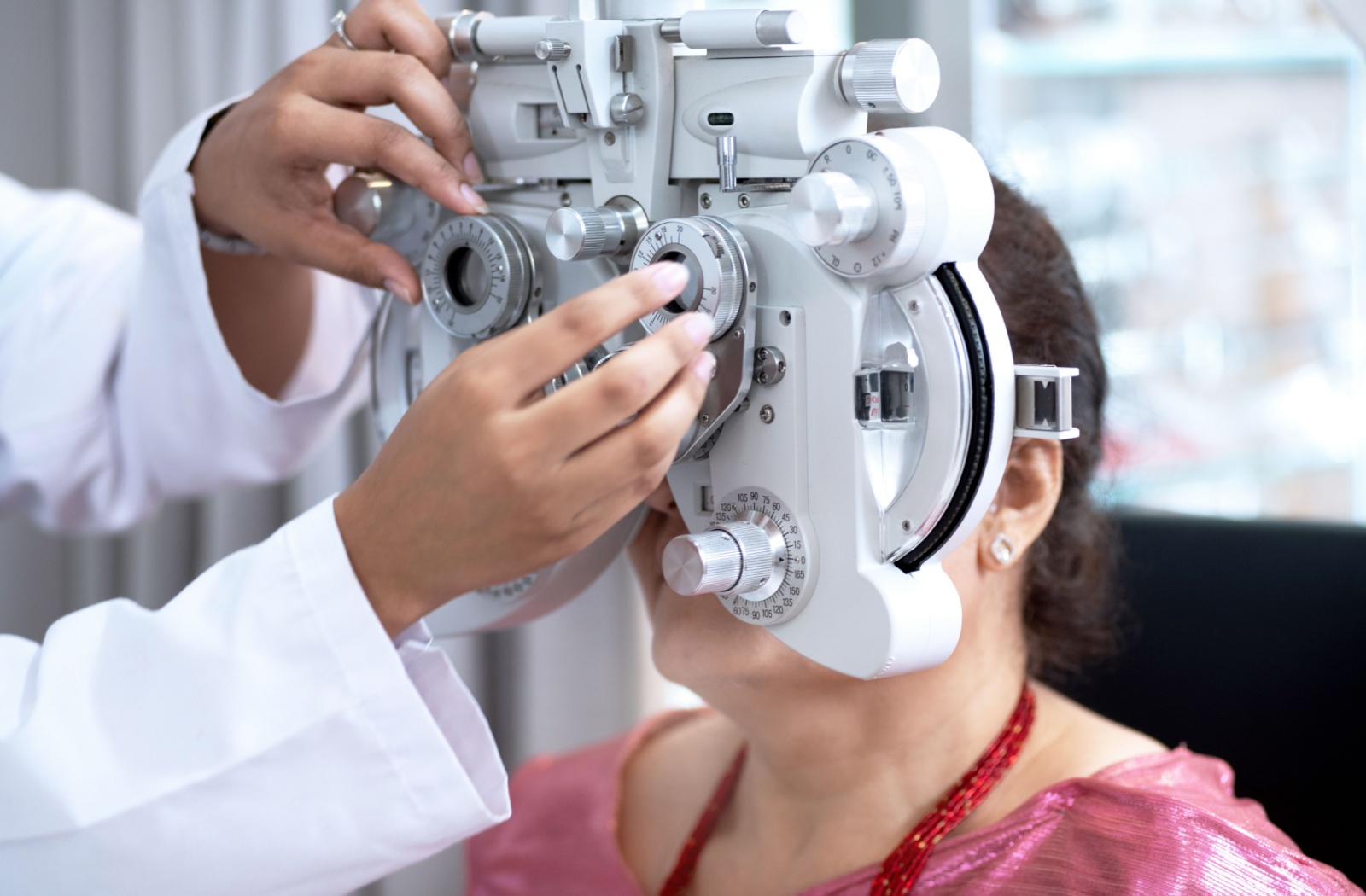A Complex Problem in a Digital Age
When dry eyes, eye strain, blurred vision, headaches, or neck and shoulder pain occur after working on a computer or digital device for several hours, we can help. Perhaps artificial tears, therapeutics, and omega-3 fatty acids have not helped alleviate your symptoms. If so it is time to try something else.
Despite similar symptoms, you may not be suffering from a simple case of digital eye strain or dry eye. You may be experiencing trigeminal dysphoria.
Trigeminal dysphoria is a complex neurological condition—like a headache—related to digital eye strain.
Trigeminal Dysphoria? Take the Test
This short lifestyle questionnaire can give you an idea of whether you may be experiencing trigeminal dysphoria. If you answer “Sometimes,” “Very Often,” or “Always” on 3 or more of the questions, please book an appointment with our team to discuss your symptoms.

What Is Trigeminal Dysphoria?
Trigeminal dysphoria is a kind of catch-all term that describes a range of symptoms associated with prolonged use of digital devices. It’s usually experienced as a dull headache from the back of the head to the front and vice versa.
Clinical studies have shown that patients who experience chronic headaches when working on digital devices may have a misalignment in their peripheral and central visual tracking systems. This condition, along with symptoms like fatigue, dry eyes, and light sensitivity, has been dubbed visually induced trigeminal dysphoria.
What Is the Trigeminal Nerve?
The brain is connected to the various parts of the body and organs through 12 pairs of cranial nerves. The trigeminal nerve is the longest of the cranial nerves.
The trigeminal nerve splits into 3 branches:
Ophthalmic
The ophthalmic branch is responsible for sensory stimulation to the skin, mucous membranes, and sinuses of the upper face and scalp.
The ophthalmic branch plays a role in the development of migraine headaches and is easily triggered. Some common triggers include:
- Too much caffeine
- Too little caffeine
- Excess alcohol consumption
- Weather change
- Hormonal change
- Sleep schedule change
- Not eating on time
Maxillary
The maxillary branch is primarily responsible for sensory supply to the mid-third of the face.
Mandibular
The mandibular branch has a sensory role in the head. It’s associated with the parasympathetic fibres of other cranial nerves.
What is Neurolens?
Those with trigeminal dysphoria have experienced great success with Neurolens. These special lenses have significantly decreased or completely eliminated symptoms for nearly 91% of our patients.
Neurolens is scientifically designed to correct eye misalignment when looking at a screen and provide relief from uncomfortable symptoms associated with device use.
You don’t have to live with pain and discomfort when working on a computer. Call us today to learn more about trigeminal dysphoria, digital eye strain, and Neurolens glasses.
OUR LOCATION
Visit Advance Eye Care Center in Regina, for all your eye care needs. We offer a number of services, including:
- Adult & Senior Eye Exams
- Children’s Eye Exams
- Diabetic Eye Exams
- Dry Eye Therapy
- Eye Disease Diagnosis & Management
- Trigeminal Dysphoria Treatment
- And more!
Interested in our services? Book an appointment below.
AECC Regina
- 3617B Pasqua Street
- Regina, SK S4S 6W8
Hours of Operation
- Monday: 8:00 AM – 5:00 PM
- Tuesday: 8:00 AM – 5:00 PM
- Wednesday: 8:00 AM – 5:00 PM
- Thursday: 8:00 AM – 8:00 PM
- Friday: 8:00 AM – 5:00 PM
- Saturday: 8:00 AM – 1:00 PM
- Sunday: Closed
*in July and August we are closed on Saturdays and open 8:00 AM – 5:00 PM on Thursdays
Our Brands



See Our Google Reviews
Our Blog
Blepharitis from Eyelash Extensions: Signs It’s Time to See Your Eye Doctor
Eye Care, Eye Conditions & TreatmentsEyelash extensions are a popular beauty trend, offering fuller, longer lashes without daily mascara application. But as stunning as they look, they can sometimes lead to an uncomfortable condition known as blepharitis. If you’ve noticed redness, irritation, or crusting around your eyelash line after getting extensions, despite proper care, it’s time to see your eye […]
Eye Exam Regina: What to Expect
Eye Exams, Eye HealthMaintaining healthy vision is a crucial part of overall well-being. Yet, eye exams are often overlooked until something feels wrong. Regular eye exams help detect early signs of vision issues and identify health conditions such as diabetes, glaucoma, and even hypertension. Some common tests you can expect during an eye exam in Regina include: There […]
Myopia Control Lenses: How They Work & Why They’re Effective for Slowing Nearsightedness
Children’s Eye Care, Contact Lenses, MyopiaMyopia, commonly known as nearsightedness, is one of the most widespread vision concerns among school-aged children. While glasses or contact lenses can provide clear vision, they don’t prevent the condition from worsening over time. That’s where myopia control lenses come in. Myopia control lenses work by correcting blurred vision while gently defocusing peripheral vision, which […]
Blepharitis from Eyelash Extensions: Signs It’s Time to See Your Eye Doctor

Eyelash extensions are a popular beauty trend, offering fuller, longer lashes without daily mascara application. But as stunning as they look, they can sometimes lead to an uncomfortable condition known as blepharitis. If you’ve noticed redness, irritation, or crusting around your eyelash line after getting extensions, despite proper care, it’s time to see your eye […]
Eye Exam Regina: What to Expect

Maintaining healthy vision is a crucial part of overall well-being. Yet, eye exams are often overlooked until something feels wrong. Regular eye exams help detect early signs of vision issues and identify health conditions such as diabetes, glaucoma, and even hypertension. Some common tests you can expect during an eye exam in Regina include: There […]
Myopia Control Lenses: How They Work & Why They’re Effective for Slowing Nearsightedness

Myopia, commonly known as nearsightedness, is one of the most widespread vision concerns among school-aged children. While glasses or contact lenses can provide clear vision, they don’t prevent the condition from worsening over time. That’s where myopia control lenses come in. Myopia control lenses work by correcting blurred vision while gently defocusing peripheral vision, which […]


